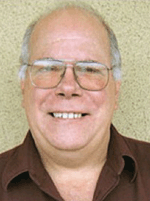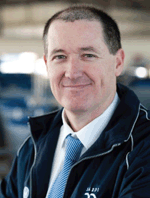Findings from the Great Australian Bight Research Program – an integrated study of environmental, economic and social values
Ben Baghurst A E , Rod Lukatelich B , David Smith C , Gavin Begg A , Rob Lewis D and Rochelle Smith BA SARDI Aquatic Sciences, PO Box 120, Henley Beach, Adelaide, SA 5022, Australia.
B BP Australia, Level 8, QV1 Building, 250 St Georges Terrace, Perth, WA 6000, Australia.
C CSIRO Oceans and Atmosphere, GPO Box 1538, Hobart, Tas. 7001, Australia.
D Flinders University, GPO Box 2100, Adelaide, SA 5001, Australia.
E Corresponding author. Email: ben.baghurst@sa.gov.au
The APPEA Journal 57(2) 388-392 https://doi.org/10.1071/AJ16144
Accepted: 9 March 2017 Published: 29 May 2017
Abstract
The Great Australian Bight Research Program (the Program) has been a 4-year, $20 million research collaboration involving BP, CSIRO, the South Australian Research and Development Institute (SARDI), the University of Adelaide and Flinders University. The Program is generating a whole-of-system understanding of the environment (physical and biological), economic and social values of the region and providing a public information source for all to use. It is one of the few whole-of-system studies ever undertaken in Australian waters and is the first large-scale, integrated study of the Great Australian Bight. Considered prospective for oil and gas, the region is also one of Australia’s most valuable marine ecosystems; supporting globally significant populations of seabirds, marine mammals and diverse and highly endemic benthic assemblages, as well as important fishing, aquaculture and ecotourism industries. The goal of the Program was to obtain information and understanding to better inform the balance of human activity and sustainability in the region. The Program involved more than 100 of Australia’s leading scientists organised around seven themes: Oceanography, Pelagic ecosystem and environmental drivers, Benthic biodiversity, Ecology of iconic species and apex predators, Petroleum geology and geochemistry, Socioeconomic analysis, and Integration and modelling. Through the multidisciplinary approach, supported by two Marine National Facility research voyages in 2013 and 2015 and use of the Integrated Marine Observing System facilities and datasets, the Program is building the first integrated model of the biological and physical systems of the Great Australian Bight.
Keywords: apex predators, benthic biodiversity, integrated ecosystem modelling, marine ecology, marine science, oceanography, oil and gas exploration, pelagic biodiversity, petroleum systems, socioeconomic analyses, threatened species, whole-of-system investigation.

Ben Baghurst has a PhD and BSc (Hons) in marine biology from Flinders University. He has 10 years of experience, having worked in a variety of technical and managerial roles for the Department of Primary Industry and Regions SA. Ben’s consulting expertise has been applied variously to environmental assessment and regulatory approval of significant South Australian resource projects on behalf of private business and the government regulator. Ben is Research Director of the Great Australian Bight Research Program. Member: SACOME. |

Rod Lukatelich has a BSc (Hons) in Botany and a PhD in phytoplankton ecology from University of Western Australia. As a Lecturer/Research Officer (1982–1989) at the Centre for Water Research at UWA, Rod’s research included studies on the impacts of eutrophication on algae and seagrasses in lakes and estuaries, development of ecological models and the relationships between hydrodynamics and water quality in reservoirs, rivers and estuaries. In 1989 Rod joined Kinhill Engineers as Senior Aquatic Ecologist and in 1990 joined BP Refinery Kwinana as Environmental Manager. He retired from BP in February 2014 and now works part-time as an environmental consultant. Rod has been a Board Director of CRC CARE Pty Ltd since its inception in 2005, is a member of CSIRO’s Energy Strategic Advisory Committee and Oceans and Atmosphere Strategic Advisory Committee, chairs the Great Australian Bight Research Program Management Committee, was a member of the Environmental Protection Authority of Western Australia during 2009–2014 and is a member of Newcastle Institute for Energy and Resources/Global Impact Cluster (Energy, Resources, Food and Water) Advisory Board at the University of Newcastle. |

David Smith leads the Marine Resources and Industries Research Program of CSIRO Oceans and Atmosphere. This program focusses on research that supports the balanced use of marine resources, including sustainable marine industries (e.g. fisheries, offshore oil and gas), marine spatial planning and biodiversity conservation. The offshore oil and gas activities of Oceans and Atmosphere sit within the Program and includes the $20 million collaborative research science program (BP, CSIRO, South Australian Research and Development Institute (SARDI), University of Adelaide and Flinders University), which is designed to improve the understanding of the environmental, economic and social value of the Great Australian Bight. The interplay of science and policy is of particular interest to Dr Smith and he has been a member of, or chaired, several resource assessment groups as well as sitting on Management Advisory Committees. He currently chairs the Research Providers Network, a committee charged with improving collaboration and coordination of fisheries and aquaculture research in Australia. He initiated the establishment of the Centre for Marine Socio-ecology at the University of Tasmania, a collaboration between CSIRO, the university and the Australian Antarctic Division. Prior to joining CSIRO in 2005, Dr Smith was Director of the Marine and Freshwater Resources Institute in Victoria. He has extensive experience in marine resources science, assessment and management and has published more than 150 research papers, reports and book chapters and invited conference papers on subjects including fisheries assessment, harvest strategies, ecosystem based management, alternative management strategies and spatial management. |

Prof. Gavin Begg is the Research Chief of SARDI Aquatic Sciences. Prior to his move to South Australia in 2012, he was the Assistant Secretary for Fisheries and Quantitative Sciences at the Commonwealth Department of Agriculture, Fisheries and Forestry. He was also a Senior Manager at the Australian Fisheries Management Authority, Program Leader at the CRC Reef Research Centre James Cook University, and Research Scientist and Postdoctoral Fellow at the Marine Research Institute Iceland and the National Marine Fisheries Centre, Woods Hole, USA. He has experience in the assessment and management of marine fisheries and ecosystems, led Australian delegations to international fisheries meetings, provided integrated scientific and economic advice, data and assessments to support government policies and is involved in a range of advisory committees where he contributes to the shaping of fisheries and environmental research, policy and management outcomes. |

Rob Lewis has 43 years of experience in marine and fisheries research, former Director of the South Australian Department of Fisheries, CEO of the SARDI and a range of senior project management positions with Flinders and Adelaide Universities. He is an Adjunct Professor at Flinders University. His current activities include Chair/Director of the boards of several private and public companies and committees. Rob is currently Chair of the Australian Genome Research Facility Pty Ltd, Non-Executive Director of unIPartners Ltd and Member of the Adelaide and Mt Lofty Ranges NRM Board. He is a Director of the research services company Science Without Bounds Pty Ltd and the family investment company KJT Lewis Pty Ltd. His qualifications/awards include a BSc (Hons) and DSc (honoris causa), as well as Centenary Medal for services to marine science and national Public Service Medal for services to primary industries research and development. He is a Fellow of the Australian Academy of Technical Sciences and Engineering and SARDI Honorary Fellow. |

Rochelle Smith is the Environment Manager at BP Developments Australia. In Australia, BP Developments Australia operates four exploration permits in the Great Australian Bight, and is a joint venturer in several operations including the North West Shelf, Browse LNG Development and Greater Gorgon. Rochelle has nearly 20 years of experience in oil and gas. Prior to joining BP, Rochelle was Lead Environmental Specialist at BHP Billiton Petroleum, and was also an Environmental Advisor at the Western Australian Department of Mines and Petroleum and Department of Environmental Protection. She has a BSc in Environmental Science, Honours in Biology and a Masters in Environmental Science. |
References
Bruce, B., and Bradford, R. (2012). Spatial dynamics and habitat preferences of juvenile white sharks in eastern Australia. In ‘Global perspectives on the biology and life history of the great white shark’. (Ed. M. Domeier.) pp. 225–253. (CRC Press: Boca Raton, FL.)Currie, D. R., Sorokin, S. J., and Ward, T. M. (2009). Infaunal macroinvertebrate assemblages of the eastern Great Australian Bight: effectiveness of a marine protected area in representing the region’s benthic biodiversity. Marine and Freshwater Research 60, 459–474.
| Infaunal macroinvertebrate assemblages of the eastern Great Australian Bight: effectiveness of a marine protected area in representing the region’s benthic biodiversity.Crossref | GoogleScholarGoogle Scholar |
Gill, P. C., Morrice, M. G., Page, B., Pirzl, R., Levings, A. H., and Coyne, M. (2011). Blue whale habitat selection and within-season distribution in a regional upwelling system off southern Australia. Marine Ecology Progress Series 421, 243–263.
| Blue whale habitat selection and within-season distribution in a regional upwelling system off southern Australia.Crossref | GoogleScholarGoogle Scholar |
Goldsworthy, S. D., Page, B., Rogers, P. J., Bulman, C., Wiebkin, A., McLeay, L. J., Einoder, L., Alastair, M. M., Baylis, A. M., Braley, M., Caines, R., Daly, K., Huveneers, C., Peters, K., Lowther, A. D., and Ward, T. M. (2013). Trophodynamics of the eastern Great Australian Bight ecosystem: ecological change associated with the growth of Australia’s largest fishery. Ecological Modelling 255, 38–57.
| Trophodynamics of the eastern Great Australian Bight ecosystem: ecological change associated with the growth of Australia’s largest fishery.Crossref | GoogleScholarGoogle Scholar |
James, N.P., and Bone, Y.(2011). ‘Neritic carbonate sediments in a temperate realm: southern Australia.’ (Springer, New York.)
Patterson, T. A., Evans, K., Carter, T. I., and Gunn, J. S. (2008). Movement and behaviour of large southern bluefin tuna (Thunnus maccoyii) in the Australian region determined using pop-up satellite archival tags. Fisheries Oceanography 17, 352–367.
| Movement and behaviour of large southern bluefin tuna (Thunnus maccoyii) in the Australian region determined using pop-up satellite archival tags.Crossref | GoogleScholarGoogle Scholar |
Rogers, P. J., Ward, T. M., van Ruth, P. D., Williams, A., Bruce, B. D., Connell, S. D., Currie, D. R., Davies, C. R., Evans, K., Gillanders, B. M., Goldsworthy, S. D., Griffin, D. A., Hardman-Mountford, N. J., Ivey, A. R., Kloser, R. J., Middleton, J. K., Richardson, A. E., Ross, A., Tanner, J. E., and Young, J. (2013). Physical processes, biodiversity and ecology of the Great Australian Bight region: a literature review. (CSIRO, Australia.)
Upton, D. (2014). The Great Australian Bight an emerging global hotspot. GEOExPro 11, 20–24.
Ward, T. M., McLeay, L. J., and Rogers, P. J. (2003). Benthic Protection Zone of the Great Australian Bight Marine Park. 2. Monitoring Sustainable Use. Report to National Parks and Wildlife South Australia and Commonwealth Department of Environment and Heritage. South Australian Research and Development Institute, Adelaide, SA.
Ward, T. M., McLeay, L. J., Dimmlich, W. F., Rogers, P. J., McClatchie, S. A. M., Matthews, R., Kaempf, J., and van Ruth, P. D. (2006a). Pelagic ecology of a northern boundary current system: effects of upwelling on the production and distribution of sardine (Sardinops sagax), anchovy (Engraulis australis) and southern bluefin tuna (Thunnus maccoyii) in the Great Australian Bight. Fisheries Oceanography 15, 191–207.
| Pelagic ecology of a northern boundary current system: effects of upwelling on the production and distribution of sardine (Sardinops sagax), anchovy (Engraulis australis) and southern bluefin tuna (Thunnus maccoyii) in the Great Australian Bight.Crossref | GoogleScholarGoogle Scholar |
Ward, T. M., Sorokin, S. J., Currie, D. R., Rogers, P. J., and McLeay, L. J. (2006b). Epifaunal assemblages of the eastern Great Australian Bight: effectiveness of a benthic protection zone in representing regional biodiversity. Continental Shelf Research 26, 25–40.
| Epifaunal assemblages of the eastern Great Australian Bight: effectiveness of a benthic protection zone in representing regional biodiversity.Crossref | GoogleScholarGoogle Scholar |
Williams, A., Koslow, A. J., and Last, P. R. (2001). Diversity, density and community structure of the demersal fish fauna of the continental slope off Western Australia (20 to 35° S). Marine Ecology Progress Series 212, 247–263.
| Diversity, density and community structure of the demersal fish fauna of the continental slope off Western Australia (20 to 35° S).Crossref | GoogleScholarGoogle Scholar |


